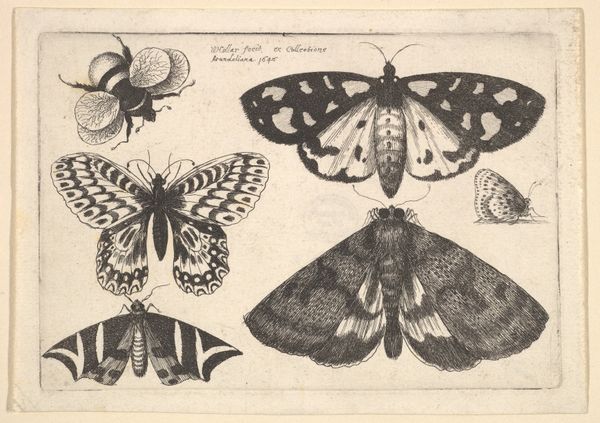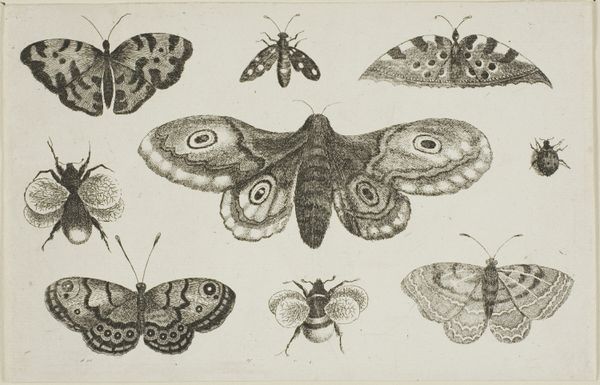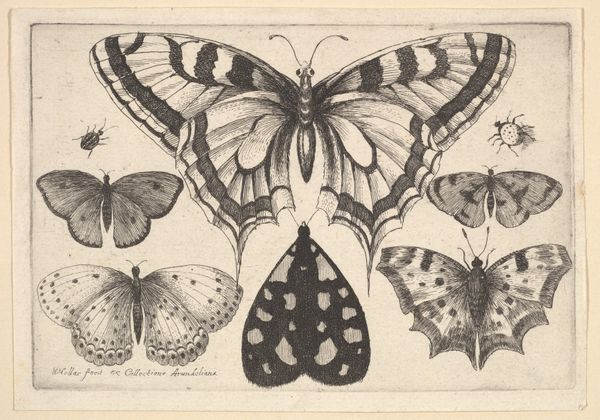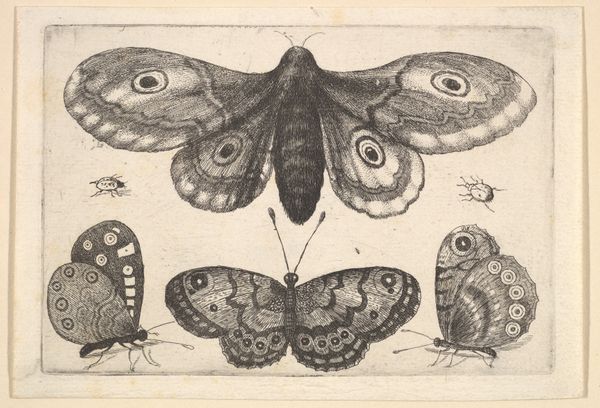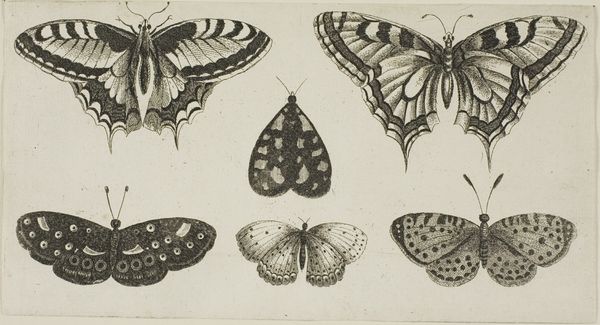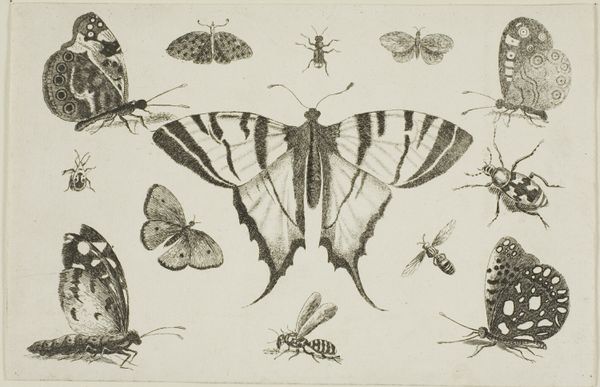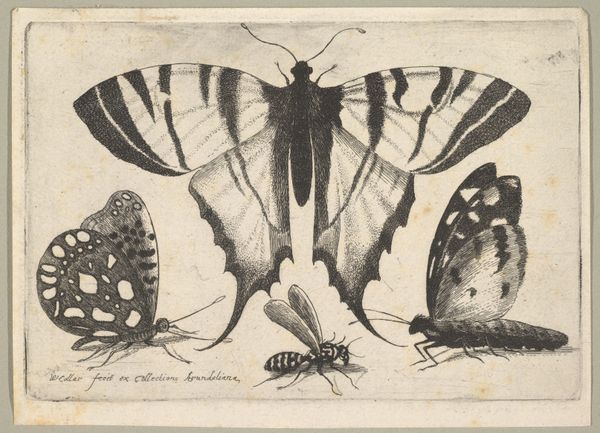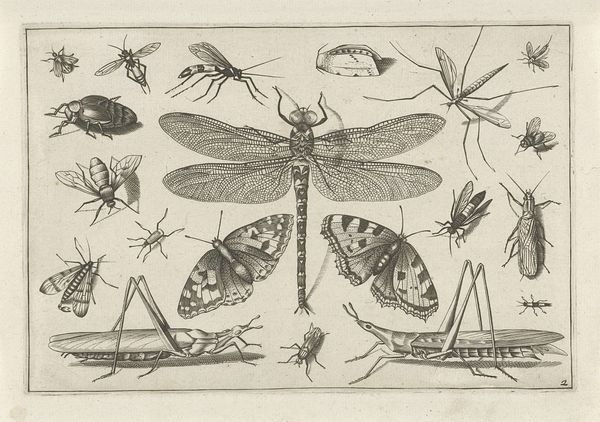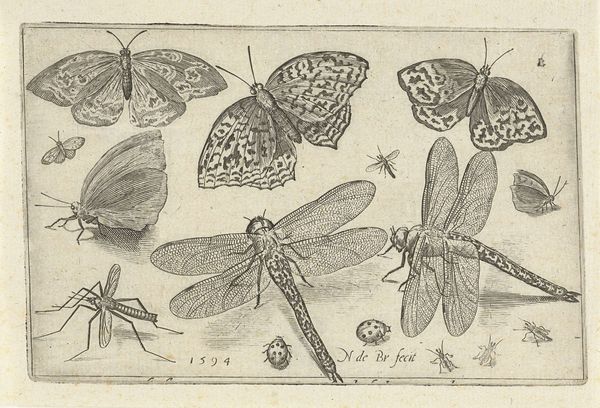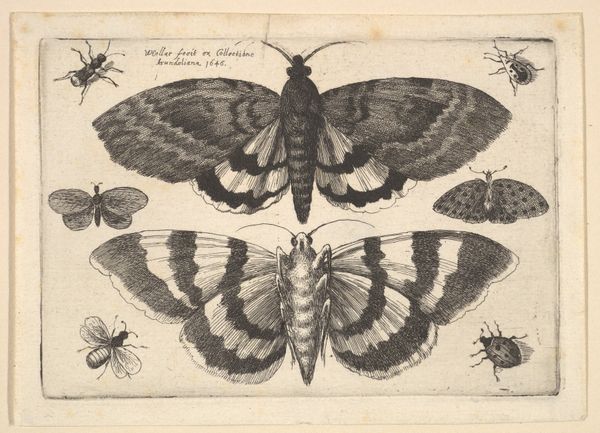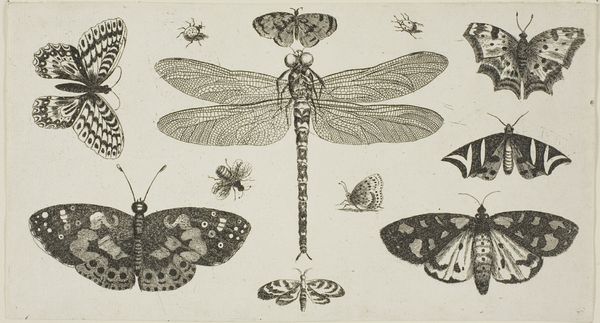
#
toned paper
#
light pencil work
# print
#
pencil sketch
#
old engraving style
#
personal sketchbook
#
pen-ink sketch
#
watercolour illustration
#
sketchbook art
#
pencil art
#
watercolor
Dimensions: plate: 11.8 × 18.4 cm (4 5/8 × 7 1/4 in.) sheet: 12.6 × 19.2 cm (4 15/16 × 7 9/16 in.)
Copyright: National Gallery of Art: CC0 1.0
Editor: This is Wenceslaus Hollar’s "Two Dragonflies and Five Butterflies," a print dating from between 1644 and 1652. The fine lines create almost scientific renderings, yet the arrangement feels intentionally artistic. How do you interpret this combination of art and science in Hollar's work? Curator: Well, considering the socio-political climate of the mid-17th century, these depictions of nature weren't just aesthetic or scientific. The meticulous detail, rendered in a medium accessible to a wider public, can be seen as a form of democratic engagement with the natural world. It asks, who has access to beauty, and who benefits from its understanding? Does rendering nature in this style reflect colonial scientific desires of classifying the world, and could there be underlying themes related to ownership and power dynamics related to knowledge at play? Editor: That’s interesting. I hadn’t considered the accessibility aspect and how it could be related to democracy. It also makes me consider the detailed documentation like scientific data collection. Do you think his rendering choices were influenced by the social context? Curator: Absolutely. Art doesn't exist in a vacuum. Hollar’s life, marked by displacement due to the Thirty Years' War, informs his perspective. The transient nature of these insects, beautifully captured, could subtly reflect the broader instability of the era. Even his choice to depict these smaller creatures invites discourse about power structures and hierarchies during the Early Modern period. It begs the question: Whose stories and voices are centered, and whose are marginalized? Editor: So by focusing on insects, he’s almost highlighting a different perspective… it is a sort of counter-narrative to what was valued. Thank you, I had not really considered this piece in that light. Curator: Exactly! Looking at art through the lens of history allows us to address whose perspective is at play and hopefully become more critical observers.
Comments
No comments
Be the first to comment and join the conversation on the ultimate creative platform.
